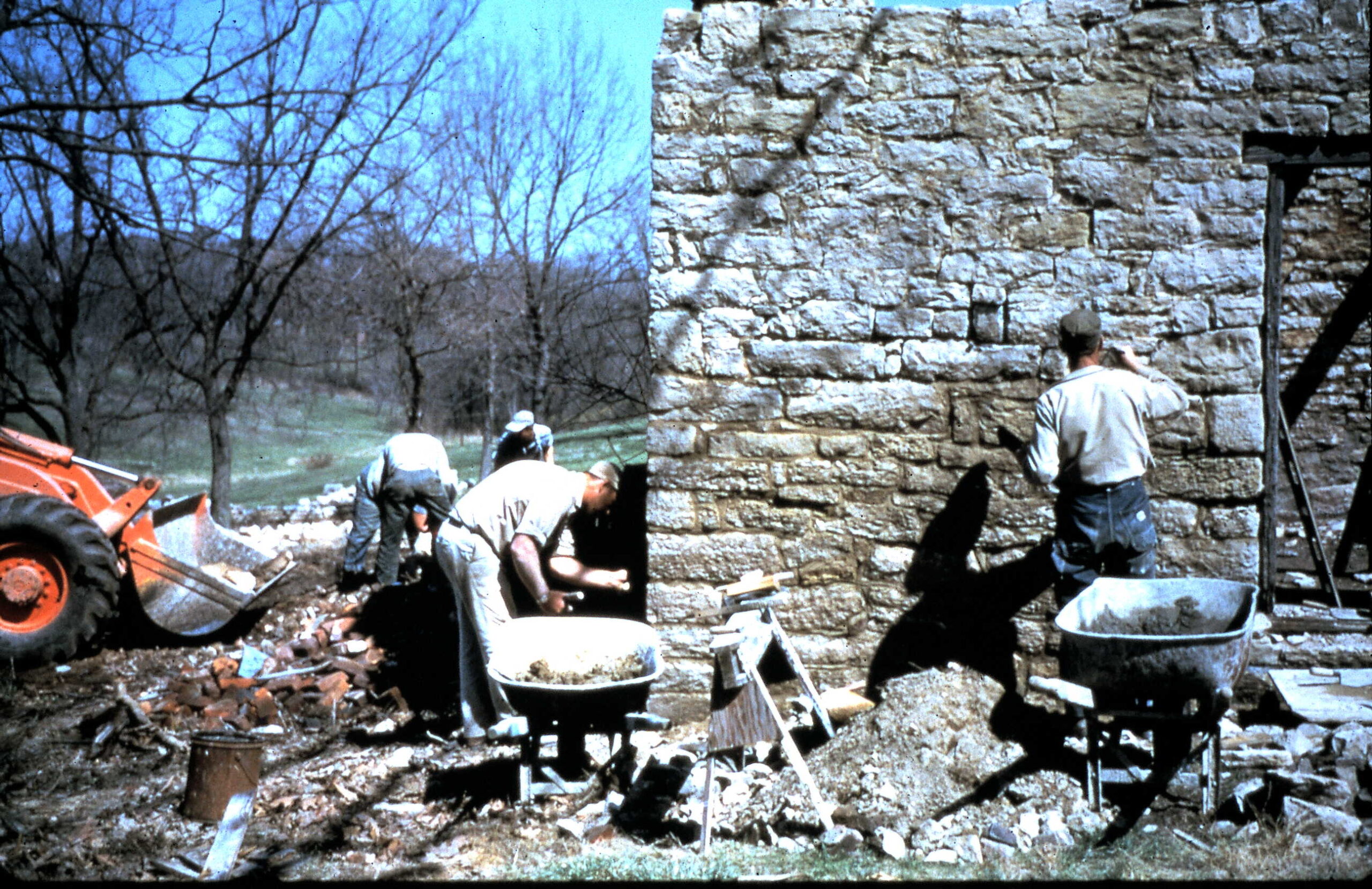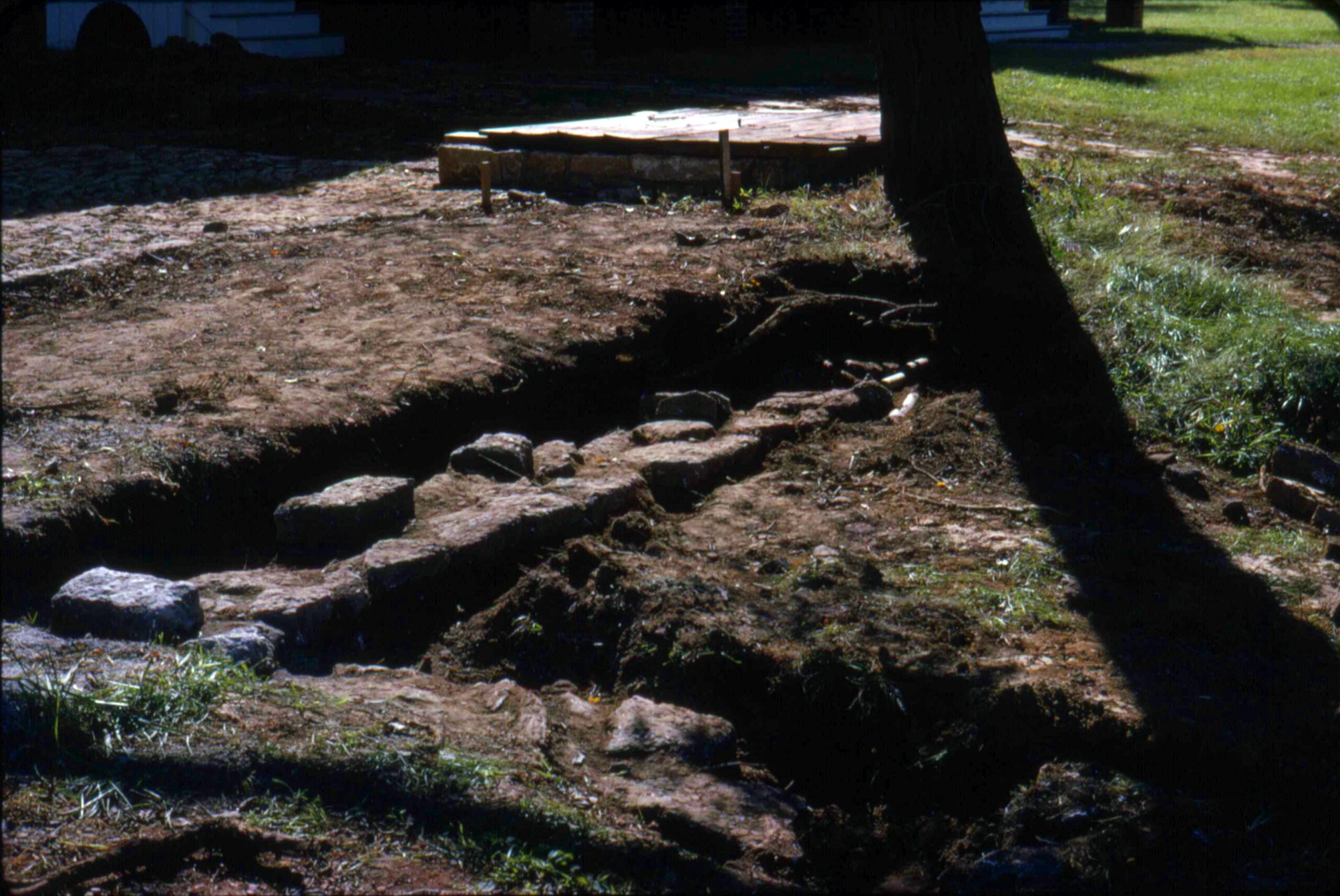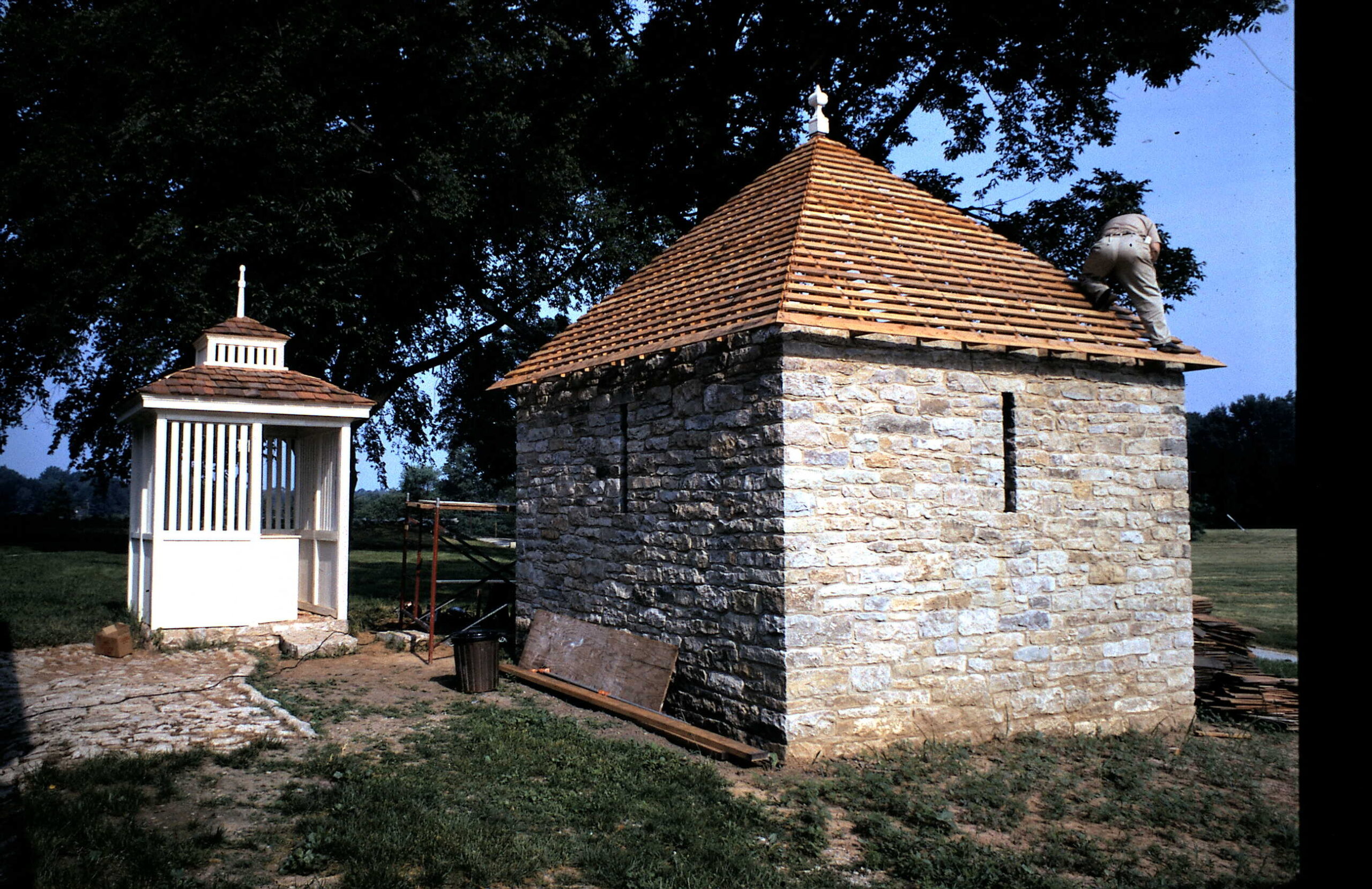Dairy

The daily activities of the dairy were overseen by Lucy Croghan, with the specific dairying labor being carried out by enslaved women and their daughters.
This building is reconstructed from stone and falls several feet below grade in order to encourage the cool temperatures necessary to work with dairy products. If possible, the temperature of a dairy was kept at least 10-15 degrees cooler than outside temperatures. (Ideally 50 degrees.)
Dairies were often found near wells and springhouses, as water was necessary to clean the dairy daily, and the water flowing underneath the earth would help keep the dairy cool. Cleanliness and cool temperatures were the two most important factors in dairy management: The walls are whitewashed with yellow ocher to absorb odors and reflect sunlight, while the ventilation shafts in the walls allow air to circulate without letting in too much light, which could spoil milk products.
Dairy products could be stored in either the dairy or the springhouse until ready for use. Milk, butter, and cream were stored in crocks, cheese was wrapped in cheesecloth, and eggs were oiled or waxed for preservation.




